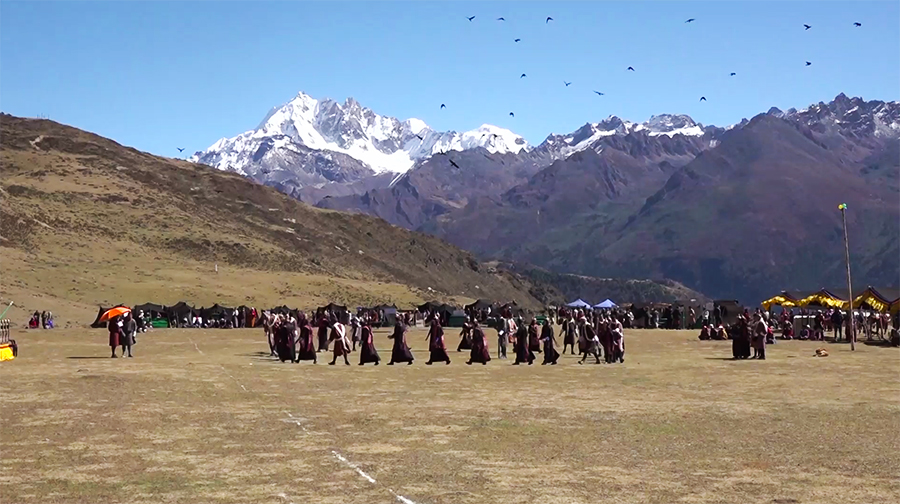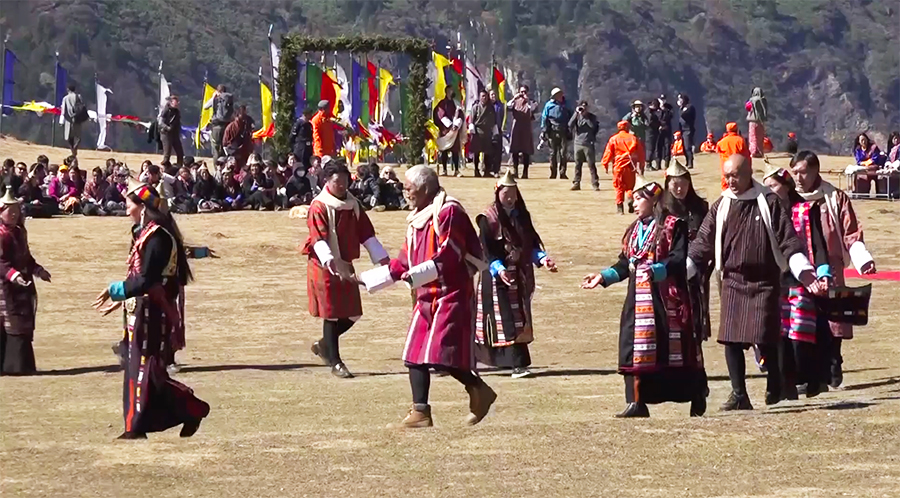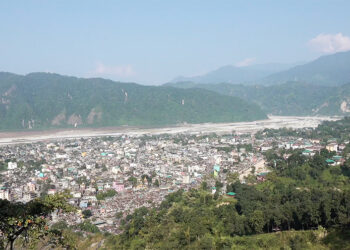 Spectators at the recent Royal Highland Festival witnessed Layapai Auley, one of the significant traditional cultural expressions unique to the Layap community in Gasa, something that the future generations may not see if not preserved. The tradition of reciting this folk song is now on the verge of disappearance. What was once performed annually in every household throughout Laya is now held only in Lungo chiwog. The Royal Highland Festival is helping to keep it alive by bringing Layaps together to perform and celebrate it during the two-day festival.
Spectators at the recent Royal Highland Festival witnessed Layapai Auley, one of the significant traditional cultural expressions unique to the Layap community in Gasa, something that the future generations may not see if not preserved. The tradition of reciting this folk song is now on the verge of disappearance. What was once performed annually in every household throughout Laya is now held only in Lungo chiwog. The Royal Highland Festival is helping to keep it alive by bringing Layaps together to perform and celebrate it during the two-day festival.
 Amid the snow-clad mountains, the spiritually enchanting tune of Layapai Auley fills the air in Lungo.
Amid the snow-clad mountains, the spiritually enchanting tune of Layapai Auley fills the air in Lungo.
Each verse carries deep historical and spiritual significance. Singing praises for their guardian deities is Layaps’ way of seeking peace, prosperity, and protection over their community and livestock.
 During the Royal Highland Festival, held every October, Layapai Auley is recited with choreographed dance steps unlike in the villages, an effort towards preserving the tradition.
During the Royal Highland Festival, held every October, Layapai Auley is recited with choreographed dance steps unlike in the villages, an effort towards preserving the tradition.
In olden days, its recitation, held during the ninth month of the Bhutanese lunar calendar, would last at least a week, with Layaps, in groups, visiting each household at night reciting the folk song.
Layaps, both men and women, gather, dressed in their traditional attire.
They start the recitation at night from Zhabdrung Lhakhang at Chongra village, the place where Zhabdrung stayed on arrival in Bhutan. From there, locals, in groups, visit every household, reciting the folk song. House owners would welcome the groups by keeping their doors open with tea, snacks and drinks ready to be served.
Some groups also perform it outdoors, under the open sky, surrounded by the tranquil mountains, symbolizing Layaps’ close bond with nature and their guardian deities.
 However, today, not many Layaps are keen about this tradition. Locals say neither the entire community takes part in it nor do the households welcome the performing groups.
However, today, not many Layaps are keen about this tradition. Locals say neither the entire community takes part in it nor do the households welcome the performing groups.
They say most of the houses remain locked during the celebration, driving this tradition to decline.
“If this tradition declines, it would be as if one aspect of the Layaps’ identity is lost. For instance, it would be like a tree losing one of its branches. Because of the Auley, we receive many tourists, and with the growing number of visitors, our people are earning a good income. That is why our people are concerned about preserving it,” said Laya Mangmi, Pema Jamtsho.
“Today, due to modernisation, our people have started ignoring the groups coming to recite the song, complaining that their house gets dirty. In the past, it was not like this. In fact, people used to happily welcome the visiting group, believing that their visit brings good fortune and blessings. It was highly regarded that sometimes we would even request the groups to visit our homes. But today, the tradition has declined drastically,” said Kinley Dorji, a resident of Laya.
Damchoe, another resident of Laya, said Layaps’ participation in the event declined drastically over the years along with the way its performed.
“Even the style of recitation used to be different from what it is today. Before, people used to cover their heads with Khamar scarves before entering a house. But now, the younger generation does not even carry Khamar scarves. Likewise, the verses are no longer recited in the proper chronological.”
Laya Mangmi, Pema Jamtsho, said aware of the declining tradition of auley recitation, the gewog administration is working toward its preservation and promotion.
“The gewog administration plans to develop a procedure where groups of people can visit each chiwog and recite the song in an open space outside homes, without having to enter homes. We are currently discussing this with our community. We also have plans to preserve and promote our Auley tradition in the future.”
 The folk song is believed to have originated in the 17th century, during the time of Zhabdrung Ngawang Namgyal. It is believed that Zhabdrung himself composed the song as an expression of loyalty, faith, and gratitude to the spiritual leaders.
The folk song is believed to have originated in the 17th century, during the time of Zhabdrung Ngawang Namgyal. It is believed that Zhabdrung himself composed the song as an expression of loyalty, faith, and gratitude to the spiritual leaders.
Beyond spiritual significance, the recitation of the folk song brings together highlanders, fostering social unity, strengthening harmony and reinforcing the shared cultural identity among Layaps.
Changa Dorji, Gasa
Edited by Phub Gyem







